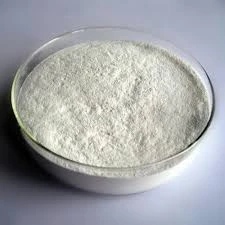
Oct . 16, 2024 18:48 Back to list
hpmc چیست
What is HPMC?
Hydroxypropyl Methylcellulose (HPMC) is a versatile compound derived from cellulose, a natural polymer found in plant cell walls. As a member of the cellulose ether family, HPMC has gained significant attention due to its unique properties and various applications across numerous industries, particularly in food, pharmaceuticals, and construction.
Composition and Structure
HPMC is synthesized by modifying cellulose through the introduction of hydroxypropyl and methyl groups. This modification enhances the solubility of cellulose in water and alters its physical and chemical properties, making it more applicable in different formulations. The degree of substitution determines the specific characteristics of HPMC, such as its viscosity, thermal stability, and gel-forming ability.
Properties of HPMC
HPMC exhibits several notable properties that contribute to its popularity
1. Water Solubility HPMC is soluble in cold water, forming a clear viscous solution, which makes it an excellent thickening agent. 2. Film Forming Capability It can form thin, transparent films that are flexible and strong, making it useful in coatings and encapsulation.
3. Biocompatibility HPMC is widely recognized for its biocompatibility, making it safe for use in pharmaceutical products and food items.
.
5. Non-toxic and Eco-friendly Being derived from natural cellulose, HPMC is non-toxic and biodegradable, aligning with the increasing demand for sustainable materials.
hpmc چیست

Applications of HPMC
The applications of HPMC are expansive, owing to its diverse properties
1. Pharmaceuticals In the pharmaceutical industry, HPMC is used as a binder in tablet formulations, a viscosity-enhancing agent in liquid medications, and a stabilizer in emulsions. Its ability to form controlled-release formulations makes it particularly valuable in modern drug delivery systems.
2. Food Industry HPMC serves as a thickening agent, emulsifier, and stabilizer in various food products, including sauces, dressings, and baked goods. It contributes to improved texture and shelf life, enhancing the sensory properties of food.
3. Cosmetics and Personal Care In cosmetics, HPMC acts as a thickener and emulsifier, providing desired textures in creams and lotions. Its film-forming ability is utilized in products like hair gels and setting sprays.
4. Construction HPMC is increasingly used in construction materials, such as mortar and tile adhesives. It improves workability and adhesion while extending the open time of these materials, making them easier to apply.
5. Biomedical Applications Beyond pharmaceuticals, HPMC's biocompatibility allows its use in tissue engineering and as a component of wound dressings.
Conclusion
In summary, Hydroxypropyl Methylcellulose (HPMC) is an adaptable cellulose derivative with a broad spectrum of applications across multiple industries. Its beneficial properties, such as solubility, film formation, and non-toxicity, allow it to play a crucial role in enhancing the quality and functionality of products. As industries continue to innovate and emphasize sustainability, the demand for HPMC is likely to increase, cementing its status as a key material in numerous formulations. Whether in the food we consume, the medicines we take, or the buildings we inhabit, HPMC is a testament to the power of natural materials in modern applications.
-
Versatile Hpmc Uses in Different Industries
NewsJun.19,2025
-
Redispersible Powder's Role in Enhancing Durability of Construction Products
NewsJun.19,2025
-
Hydroxyethyl Cellulose Applications Driving Green Industrial Processes
NewsJun.19,2025
-
Exploring Different Redispersible Polymer Powder
NewsJun.19,2025
-
Choosing the Right Mortar Bonding Agent
NewsJun.19,2025
-
Applications and Significance of China Hpmc in Modern Industries
NewsJun.19,2025







